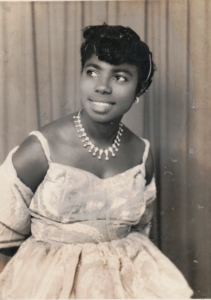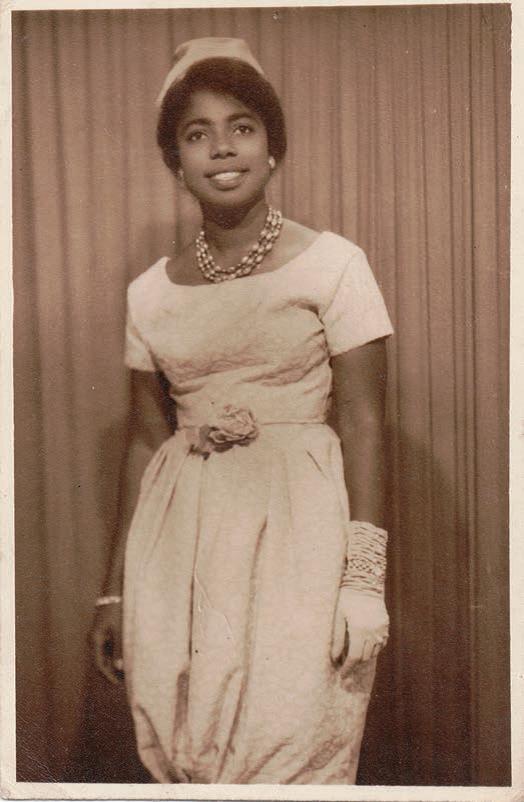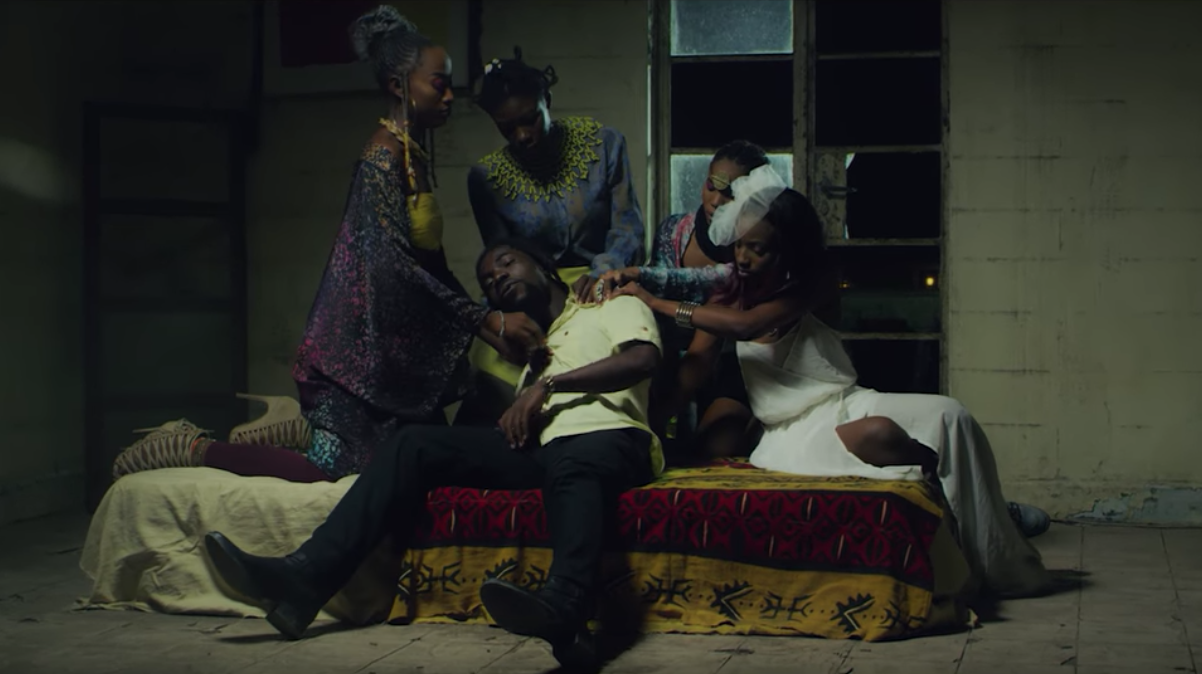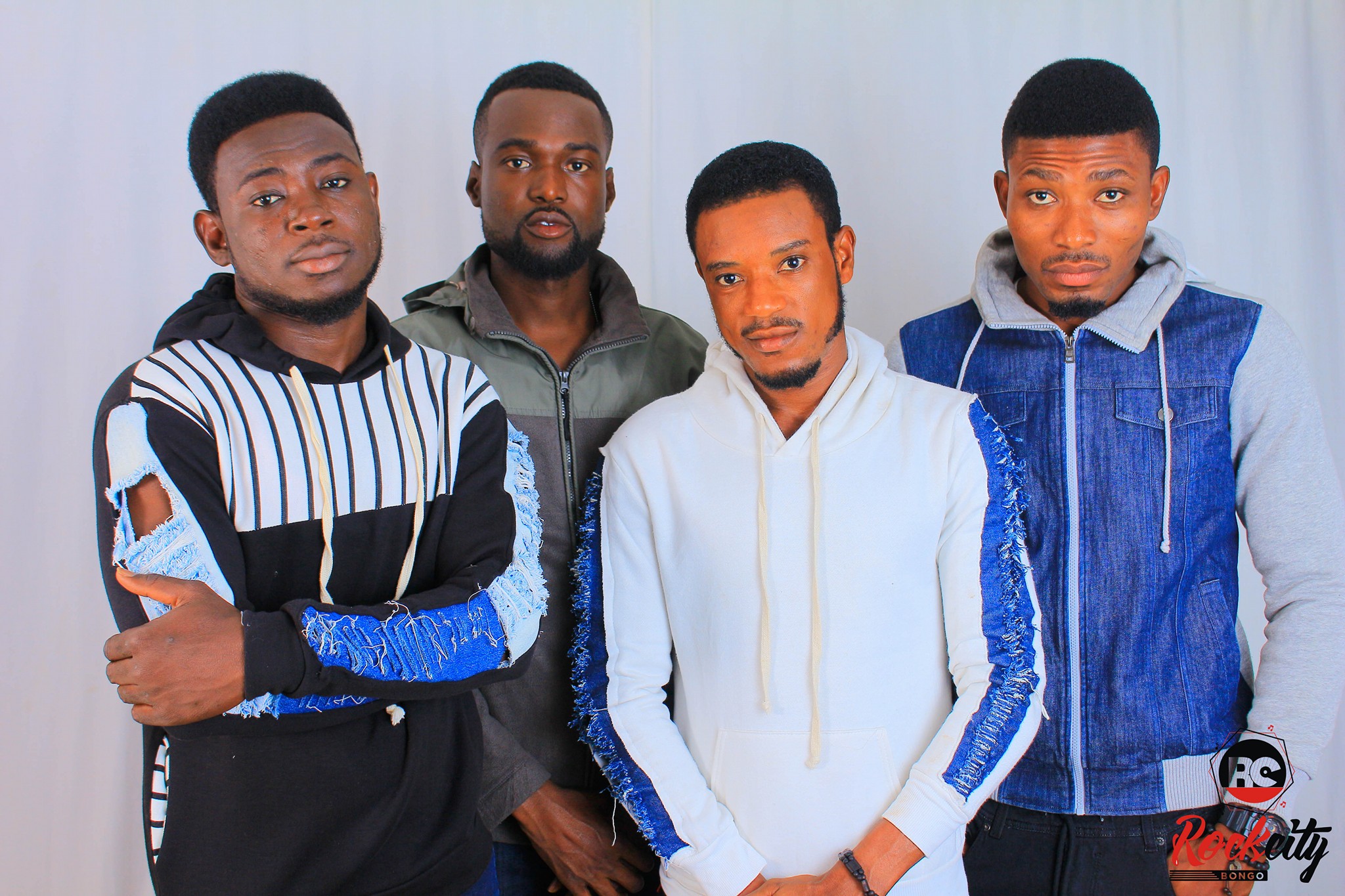
Photos: Accra: Portraits of a City, 4th March 2017- 1st April 2017, ANO, Osu. / Laurian R. Bowles (2015)
Felicia Abban: Remembering the Woman in all the Portraits
In the 1950s, an 18-year old Felicia Abban came to this gendered confluence of a national space called Accra. Married to Robert Abban the textile print merchant, she moved from Takoradi to Jamestown, Accra where she set up her Mrs. Felicia Abban’s Day and Night Quality Art Studio. One of her marketing strategies would be self-portraits. In the portraits, however, she did not hold any camera nor did anything that suggest she was the photographer. Rather, she took on traditional feminine roles (sic) and partook in different worldviews. That could have multiple interpretations. The self-portraits were not as bold a claim to ownership/authorship as the name of the studio. Self-portraits as a general rule is a subtle way of claiming authorship. It could be that her emphasis was her skill as a photographer. Devoid of proximity of photography, would she be considered a good photographer? On the other hand, it seemed a good question to ask who the woman in almost all the portraits was. It would be a good way to get introduced to Mrs. Abban’s work. Regardless of what it was meant to mean, it sure broke down barriers in similar ways as Frederick Douglass’ portraits did. The photography studio in West Africa is a theater of rituals, of becoming and being, of the envisioned and lived, of myth. It is for imitating life. And she did that in the self-portraits. With her body as a site of cultural inscription, she appealed to different segments of the Gold Coast/Ghana life and aesthetics. For instance, the self-portraits in which she wore Dashiki are dated 1959-1964. This is also the period of Kwame Nkrumah, Pan-Africanism, Black consciousness and Nationalism in the new Ghana. Many African Diasporans had moved to Ghana and it could have meant she was appealing to them. 

 In another set of self-portraits dated around the same time as the above, she wore Kente cloths. Before 1957, Ghana Independence year, she seemed to have worn in the portraits, cloths made of lace and embroidery of European origin. She looked like a maiden of that era with young and rested eyes. In the 1970s, she was in lace and embroidery. This lace and embroidery seems of Northern Nigerian origin. With the textile prints, she appealed to the high end of the Ghanaian society since the prints have long been valued as of symbol status. She seemed as a quiet pop-culture icon. She moved with the times by inventing her other selves. What the portraits could not answer, it appeared to me, was if she really believed in the ideologies of the groups that she was appealing to. But that, too, is part of the making of myth. Anonymity deepens mythology. In a studio where the form of consent is primarily a transaction, it can be hard to keep track of who and what a person says (s)he is. Do not take the portrait for what it looks like. It can be a hyper reality or a fallacy or the conspiracy that the photographer and her participant wanted us to see or the things that they wanted us to remember them for. These portraits are not only realities, something that street photography easily affords. It is also the dreams of a city. Its wonder. Its kindness and tolerance. Like all successful cities, Accra is a place to rest dreams. It flies our hearts like kites. Like they say, Accra we dey. Chale.
In another set of self-portraits dated around the same time as the above, she wore Kente cloths. Before 1957, Ghana Independence year, she seemed to have worn in the portraits, cloths made of lace and embroidery of European origin. She looked like a maiden of that era with young and rested eyes. In the 1970s, she was in lace and embroidery. This lace and embroidery seems of Northern Nigerian origin. With the textile prints, she appealed to the high end of the Ghanaian society since the prints have long been valued as of symbol status. She seemed as a quiet pop-culture icon. She moved with the times by inventing her other selves. What the portraits could not answer, it appeared to me, was if she really believed in the ideologies of the groups that she was appealing to. But that, too, is part of the making of myth. Anonymity deepens mythology. In a studio where the form of consent is primarily a transaction, it can be hard to keep track of who and what a person says (s)he is. Do not take the portrait for what it looks like. It can be a hyper reality or a fallacy or the conspiracy that the photographer and her participant wanted us to see or the things that they wanted us to remember them for. These portraits are not only realities, something that street photography easily affords. It is also the dreams of a city. Its wonder. Its kindness and tolerance. Like all successful cities, Accra is a place to rest dreams. It flies our hearts like kites. Like they say, Accra we dey. Chale.

by Kwabena Agyare Yeboah
Literary and Pop Culture Critic



